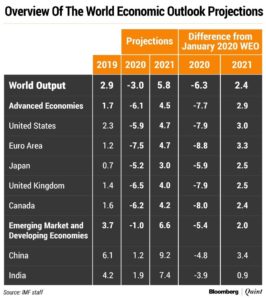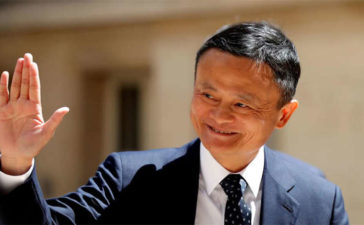IMF’s Chief Economist Gita Gopinath said,while she supported India’s lockdown and efforts to prioritise health and protect lives, she also struck a note of caution when saying she “assumes the situation on the ground is worse than what we are seeing currently”. There’s a scope for further monetary and fiscal stimulus measures,India is one of two major economies, along with China, estimated to grow in the current fiscal, according to the IMF’s World Economic Outlook-April update. The International Monetary Fund forecasts 1.9 percent real GDP growth for India in fiscal year 2020-21, and 7.4 percent growth in fiscal year 2021-22. This contrasts with other more conservative private estimates for growth in FY21, with some even anticipating a contraction. As per Gita “That’s partly because India is yet to see as severe a health crisis as we have seen in the U.S., Europe or Wuhan in China”
” We’ve incorporated in our forecasts the support that’s obviously been done. We are also anticipating that there will be more monetary stimulus in the sense of rate cuts and other kinds of measures, and we also see scope for more being done on the fiscal side to support household.” Gita Gopinath, Chief Economist, IMF
The IMF growth forecast factors in the monetary and fiscal measures announced so far by the Reserve Bank of India and central government. Gopinath said she’s anticipating more monetary stimulus including rate cuts by the Indian central bank. “In terms of the monetary policy, the support through liquidity, through dollar swaps and through encouraging lending to small and medium enterprises, I mean, all of these are important steps and depending upon what you see on the ground, you might see more action. The RBI has given forward guidance that they will do more, if needed,” she said. The IMF April Fiscal Monitor urges India to consider more fiscal stimulus to sustain healthcare resources and the economy in the face of Covid-19 pandemic. “In India, the fiscal stance should be eased as needed to accommodate necessary increases in public health expenditure in response to the pandemic and shield against a more severe economic downturn, using targeted and temporary measures. Once the current economic situation improves, a more ambitious, credible medium-term fiscal consolidation path is needed to bring debt and interest expenditure down. Transparency must improve, and the practice of shifting spending off-budget must be curtailed.” It’s very clear that more needs to be done in India, in terms of fiscal stimulus, Gopinath reiterated, even if that meant a substantial expansion of the fiscal deficit. “Not just India, many countries are witnessing a rise in deficits and debt,” and India’s stimulus measures will be accepted in the same vein.
“IMF is advising countries to spend what they need to, but “keep the receipts”. It’s very important to have clear accountability and transparency for the spending that’s being done, both on balance sheet and off balance sheet.” Gita Gopinath, Chief Economist, IMF






